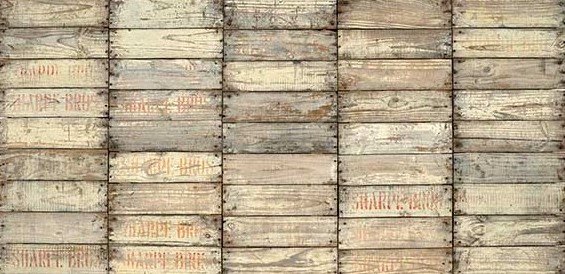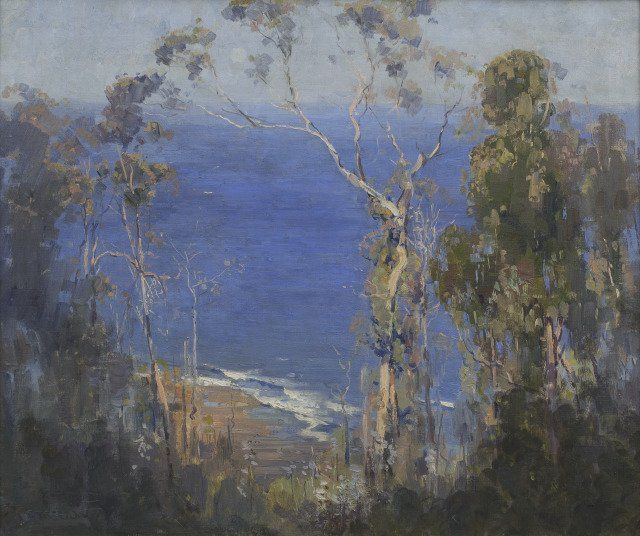Geelong Gallery and current exhibition
Phenomena (until 29th October 2023)
__________________________
Phenomena draws together a selection of contemporary works from the collection that illustrate the ways in which artists feel and see the phenomena of the world around us.
The material and visual qualities and subjects of each of these diverse works create quietly powerful and affective moods and spaces for contemplation. Includes works by Andrew Browne, Janet Dawson, Rosalie Gascoigne, Denise Green, Richard Larter, Akio Makigawa, Rosslynd Piggott, Mick Namarari Tjapaltjarri, Louise Weaver, and Fred Williams.
__________________________

__________________
Ironically and interestingly, Sharpe Bros horizontal directly links Australia and New Zealand not disimilar to Gascoigne’s own life bridging the two countries.
The obvious aged and weathered appearance essential to her practicing philosophy.
Rosalie Gascoigne fashioned many works from soft drink crates throughout the 1980s and into the 1990s, undoubtedly dependent on when she came across them.
Having arrived in Mt Stromlo from New Zealand as a young mother in her twenties, Gascoigne took inspiration from the natural environments around her home. The historical markings, rawness and weathering of the crates themselves came to represent the surrounding landscapes of Mt Stromlo. The title of Deborah Edwards catalogue raisonné ‘Material as Landscape’ (AGNSW publication to accompany Rosalie Gascoigne’s exhibition) quotes Gascoigne describing her understanding of the environment(s) that inspired and under-pinned her making, as ‘all air, all light, all space and all understatement’.
__________________________
‘...all air, all light, all space, all understatement‘ is key to understanding Sharpe Bros horizontal and Gascoigne’s oeuvre in general.
The business of Sharpe Bros cordial began in Dunedin in 1903, it crossed the ditch and set up in Warnambool in 1919, finally becoming subsumed by Cadbury Schweppes in 1972. There was a branch of Sharpe Bros in Geelong at one point. As the ‘Material as Landscape’ quote indicates, most of Gascoigne’s soft drink crate works indirectly reference the landscape enclaves in her local area. However, Sharpe Bros horizontal is specifically named; a title that explicitly references the Australia and New Zealand link – a historic, social and economic connection.

The country surrounding both Mt Stromlo and Canberra (as well as the southern Monaro region) became imprinted on her psyche: it defined her and her art. As weathered, sun-bleached and uniquely worn crates, allusions to the land and climate are manifold – the carving up of the land for agriculture and farming – mans impact on nature and society. Gascoigne’s work(s) symbolise time passing and its effects, hardship, endeavour, severe climates and harsh environments. And yet a softness too, for example the Sharpe Bros detail not only resembles the unfolding colours of dawn and sunrise over the fields. But also the individuals who crafted and shaped Australian life.
Wide open spaces that by association, tell their own story of immigrants to Australia who made their mark and forged their own histories: in, around and on the often dry, dusty, uniformed plains and towns of Australia.
Sharpe Bros horizontal is special because using a few discarded recycled crates (overlooked and forgotten), Gascoigne saw what no one else had. She alone identified with them, displaying vision and insight by reimagining their qualites: elevating them as unmistakable timelines of something greater existing under the radar. Gascoigne adroitly, succinctly and intimately reinvigorates them into a singular and largely untold story of Australian life and history. Yet from a uniquely localised point of view.
__________________________
CLICK ON IMAGES FOR GREATER DEFINITION AND DETAILS
________________
__________________________
The Changing Sky (until 16th July 2023)
The Changing Sky presents a selection of landscape works from the collection that reflect artists’ acute observation of and feeling for place, light, air, atmosphere and environment.
Includes works by Eugene von Guérard, Louis Buvelot, Arthur Streeton, Walter Withers, Ivan Durrant, Mandy Martin, Adam Pyett, and Marlene Gilson, among others.
__________________________

Arthur Streeton, Ocean blue, Lorne, 1921, oil on canvas, 64 x 76.6cm (25.19” x 30.15”)
This commanding painting stands out for all the right reasons!
Ocean blue, Lorne was included in [Streeton’s] 1938 solo exhibition, at which time it was singled out as ‘a masterpiece in colour and tone.’ —The Argus, 2 August 1938
________________
“If his writing was that lyrical, his paintings were even more so, and Edwards [Geoffrey Edwards Geelong Gallery] says much of the beauty we perceive, especially in Ocean blue, Lorne, is a result of Streeton having just returned to Australia in 1920, after his tour as an official war artist.
In the Sydney Morning Herald: Streeton’s coastal subjects presented him with an opportunity to record “the power, force and beauty of the natural world”,combining a plein-airist technique with deeply felt emotional responses to the environment. “He recorded what he saw with a mixture of accuracy and imagination and further extended his visual vocabulary of the Australian landscape.”
__________________________
Gazing at this exquisite work, a sense of contemplative awakening emerges. It is as if Streeton is lost in thought (perhaps pondering the contrasts between what he sees and what he has lately experienced in the war – a subject spoken of at length in the media), while painting en plein air in this ideal location: doing his thing intuitively – not over-thinking his technique.
Assuredly because “…of his experiences in the war, this and other paintings he did in the district from 1920-1932 encapsulate “his exuberant response to the sun-blessed and peaceful countryside of his homeland” and specifically to the fertile and prosperous west.
_______________________
Ocean blue, Lorne is bright, with a slight blueish atmospheric haze.
This may be due to the particular light and the presence of blue wavelengths. (blue represent the shortest wave lengths and are thus more prolifically spattered within the atmosphere), or it may be a purely imaginative gesture in keeping with Streeton’s love of and exuberance for the natural world, gazing at an undoubtedly spectacular scene.
Influenced by the Impressionists Streeton has reduced the amount of natural phenomena to focus intensity of colour, an impression of the water (and waves), the haze perhaps a fleeting impression and adding to what is doubtless a romantic view of Lorne given his recent circumstances. In company with this is a patchwork of hues to articulate the subject: depth, form and composition are arrived at instinctively in paint. Noticeable because there are no strong lines.
This would be in keeping with painting outdoors and getting it largely finalised before leaving. It may be late afternoon as there appears to be a faint moon within a generalised or overcast sky. The bright cobalt patches attaching to the trees are elusive; yet they stand out, adding to a certain spontaneity associated both with rambling verdant nature and the time of day. They may represent a climbing creeper like Lilac vine (Happy wanderer).
__________________________
CLICK ON IMAGES FOR GREATER DEFINITION AND DETAILS
________________











































